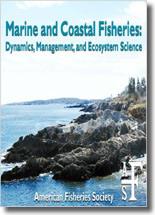Temporal and spatial variability in abundance often results from the effects of environmental and landscape variables interacting over multiple spatial scales, and understanding the complex interplay among these variables is key to elucidating the drivers of a species' population dynamics. We used a spatially explicit, variable-coefficient, generalized additive modeling approach with 24 years of fishery-independent trap data (N = 11,726 samples) to elucidate the spatiotemporal dynamics of size and size-specific CPUE of Black Sea Bass Centropristis striata along the southeastern Atlantic coast of the United States. Black Sea Bass catch exhibited complex spatial and temporal dynamics that were influenced by environmental, landscape, and sampling effects. Black Sea Bass were more commonly caught inshore than offshore, but were significantly smaller inshore and southward and larger offshore and northward in the study area. Moreover, the spatial distribution of Black Sea Bass changed as abundance varied within and among sampling seasons. Standardized mean length of Black Sea Bass also increased by more than 20% over the study period, from 230 mm TL in the early 1990s to 280 mm TL after 2010. These results elucidate the spatial and temporal dynamics of Black Sea Bass, inform population structure and indices of abundance, and provide an analytical framework that can be easily adapted to other species and systems.
How to translate text using browser tools
1 January 2015
Spatial and Temporal Patterns of Black Sea Bass Sizes and Catches in the Southeastern United States Inferred from Spatially Explicit Nonlinear Models
Nathan M. Bacheler





